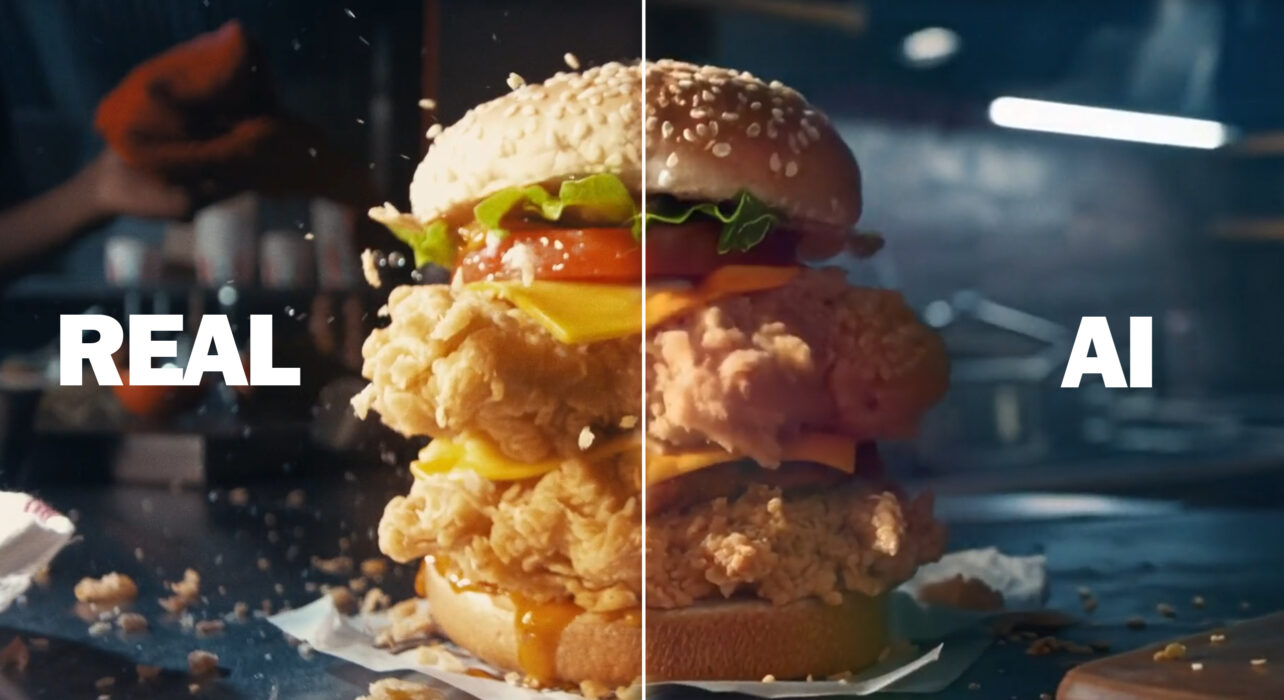Over the last two weeks, you’ve only needed to spend a fraction of time online to come across at least one AI-generated, Studio Ghibli-inspired image. ChatGPT’s latest image-generation model has been able to accurately replicate the style, color palette, hues, and compositional values that define a Ghibli film.
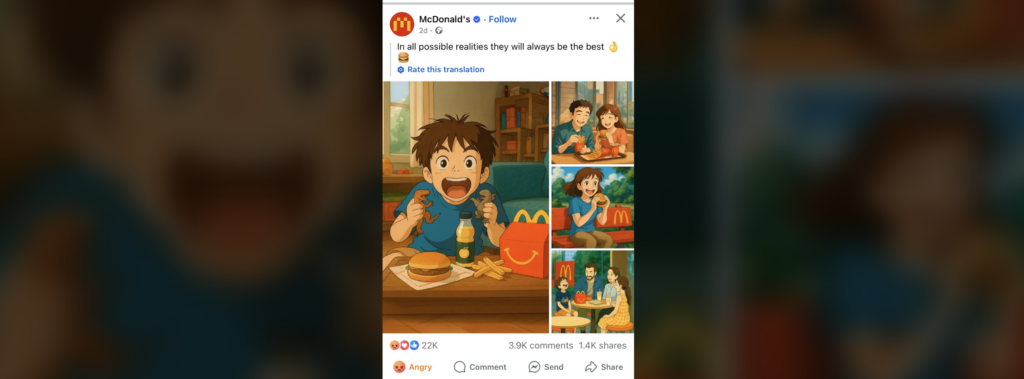
Naturally, and quite rightly, this was met with backlash from the creative community, film lovers, animation enthusiasts, and long-time Studio Ghibli fans. Hayao Miyazaki has long been a vocal critic of AI-generated art, especially given that so much of his work is deeply handcrafted and filled with heart and soul.
The Studio Ghibli–ChatGPT debacle indicates where many people draw the line regarding AI. There’s no doubt that AI can be a powerful tool, but when it begins to digest, mimic, and essentially steal the work of others, it crosses into territory that is, quite simply, unethical.
And this brings us to David Blagojević’s KFC Spec Ad.
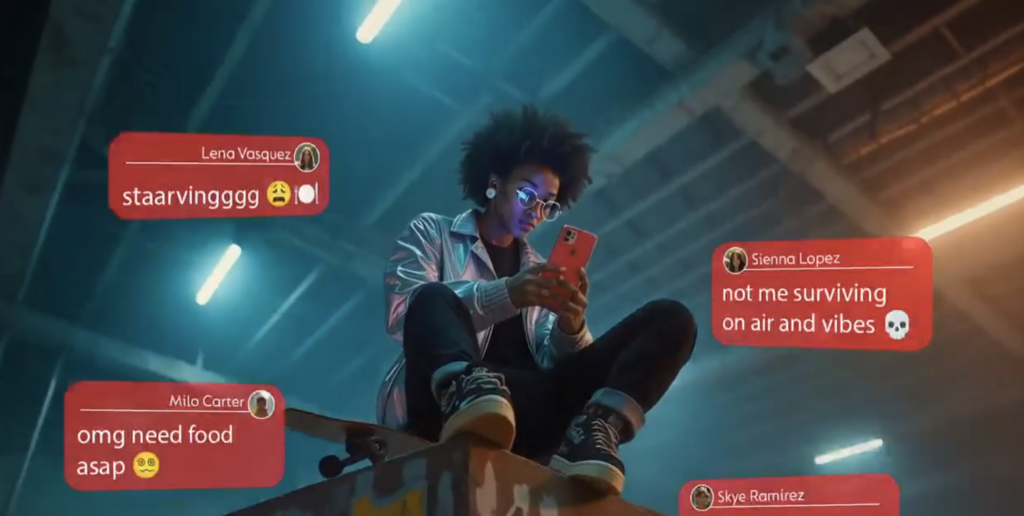
AI
This morning on Threads, I came across a post from an AI fIlm account that read, “This is the furthest thing from AI slop.” It was referring to a fully AI-generated KFC advert. Upon watching the commercial, I had a gut-punch moment.
The ad was incredibly fluid. The renders were photorealistic, the camera movement had motivation, and the direction had weight. Overall, it felt like a far cry from the disastrous, lifeless Coca-Cola Christmas AI commercial released in the winter of 2024.
While I was more than ready to close the app and sink into my desk chair for the day, I broke my cardinal rule and opened the comment section (to live a peaceful life, I recommend not doing this).
While a handful of people celebrated the result, it quickly became apparent that this AI-generated video wasn’t what it seemed, as replies started popping up with LinkedIn screenshots calling out the AI director for stealing the footage.
To LinkedIn, we go.
In Blagojević’s LinkedIn post, he wrote: “This one has been simmering for a while, and I’m finally excited to get it to see the light of day. The goal was to test the boundaries of current AI tools when it comes to photorealism in the food and beverage world and explore how well CGI and AI can merge for immersive storytelling.”
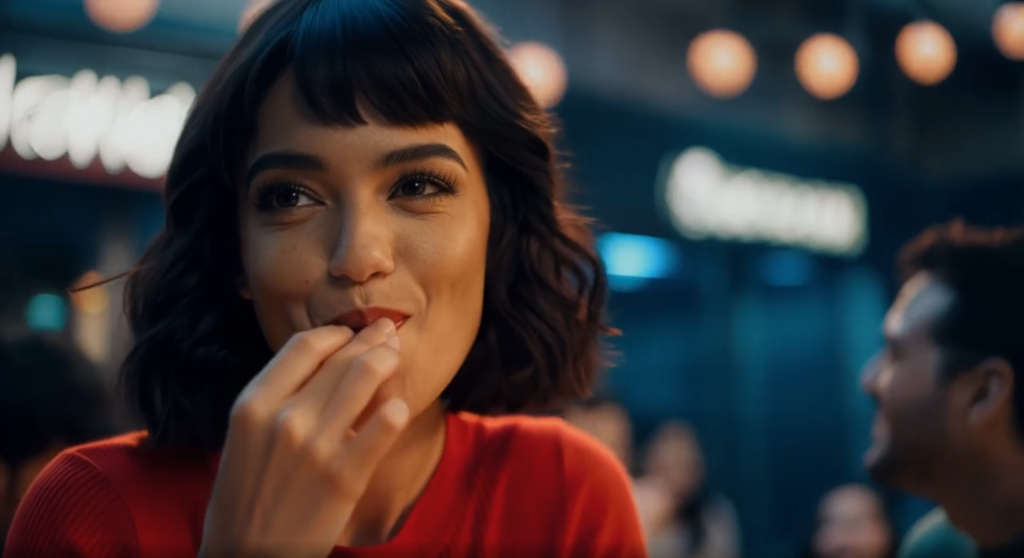
AI
Blagojević explains that “it all started with analogue pen-and-paper storyboards. From there, he created a rough lyric sketch for a track, refined it with the help of an LLM, and used Suno to generate the final song.“
So, by all accounts, this seemed like a hybrid project, developed traditionally at its core, with AI acting as a set of tools rather than the sole creator.
Or… is it?
Throughout the LinkedIn comments, amid the praise and celebration over how polished the ad looks, there are recurring cynical and angry notes and allegations that the work is stolen. These comments are often linked to an Instagram video by director Joris Noordnbos with accompanying posts to cinematographers Alejandro H. Madrid & Simon Paul‘s Instagram.
Joris has posted an Instagram Reel compiling various shots from his work on multiple KFC commercials, with those edits shown side-by-side against the AI-generated “from scratch” video. And, well, to say that the AI-generated content was storyboarded with pencil before being created in RunwayML is an incredible stretch. It’s downright disgusting.
It’s evidently clear that Blagojević used Joris’s work, along with the contributions of many other creative professionals involved in those original ads, as visual prompts to serve as the backbone for his spec ad. From the movement of the shots to the compositional framing to the identical race and stances of the actors, it’s all near enough interchangeable save for the slightly uncanny AI-rendered finish the spec piece has.

AI content left, real footage right.
Even the character shots mirror Joris’s work almost beat for beat: a brunette woman in a red top with rosy red lipstick licking her fingers and a woman on a skate ramp scrolling through her phone. Even when there’s a slight deviation in the visuals, like this Caucasian man in a denim shirt eating chicken, it still unmistakably has been pulled from the same source.
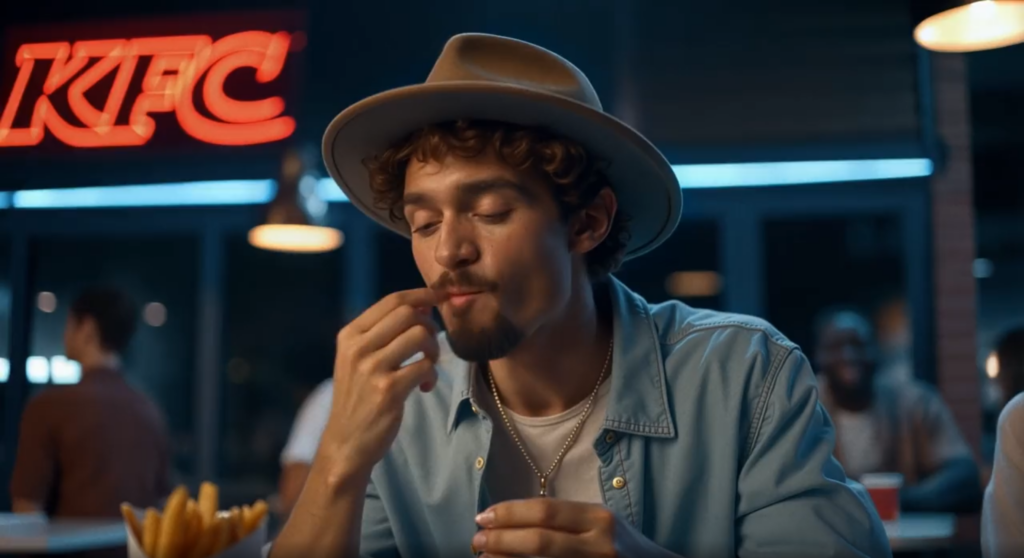
AI
We can see that the imagery, such as the costume, lighting, and actors’ features, has been pulled directly from the original content. In fact, it almost looks like the same model, which is already a hot-button issue, with actors having their likenesses used without permission.

Real
It’s blatant mimicry dressed up as original content, and the idea that this was built entirely from a traditional pre-production using pencils and a storyboarding process is misleading at best.
On Blagojević’s Instagram post, cinematographer, Alejandro H. Madrid, of the original content says:
“What’s interesting about this exercise you’re doing is that, beyond the claim that your images come from sketches, they are in fact exact replicas of footage we’ve already shot on set. So, in essence, there’s no real creativity involved. While I recognize that you’ve managed to recreate certain textures, movements, and ideas, what you’ve essentially done is inject material originally filmed by my directors—images I can directly reference on my website—into your renderings, with perhaps a background swapped or some slight alteration.”

AI content left, real footage right.
And it doesn’t stop there.
The KFC spec ad opens with a bustling fly-through of a city, eventually landing at a KFC shop. It’s reminiscent of a superhero video game fly-through. While this specific sequence isn’t part of Joris’s original work, it’s a direct shot-for-shot copy of a piece for Marc Jacobs by Miklas, known as @sur.render on Threads—a talented 3D artist and art director.
The camera movement, the path it takes through the bus, and the weaving between cars are identical. There isn’t even a level of discrepancy that would allow for creative interpretation. It’s straight-up stolen.
And this, quite frankly, is the piss-take when it comes to AI art.
David states that initial tests and deep dives into KFC’s brand identity were conducted, and the process involved 30 days of effort spread over three months. He also said he “wanted to see how far AI could go without relying on any new live-action footage.“
He’s spent the last few days replying to comments and thanking people for their kind words about his creation. But this is nothing more than feeding a professionally filmed video into a generator and asking it to tweak a few variables. Calling what is clearly a collection of others’ work passed through an AI filter a “creation” is beyond insulting. However, in typical internet fashion, the video has already spread like wildfire with false claims about how it was made.
“This ad wasn’t filmed with a camera or crew,” one video title says. Right.
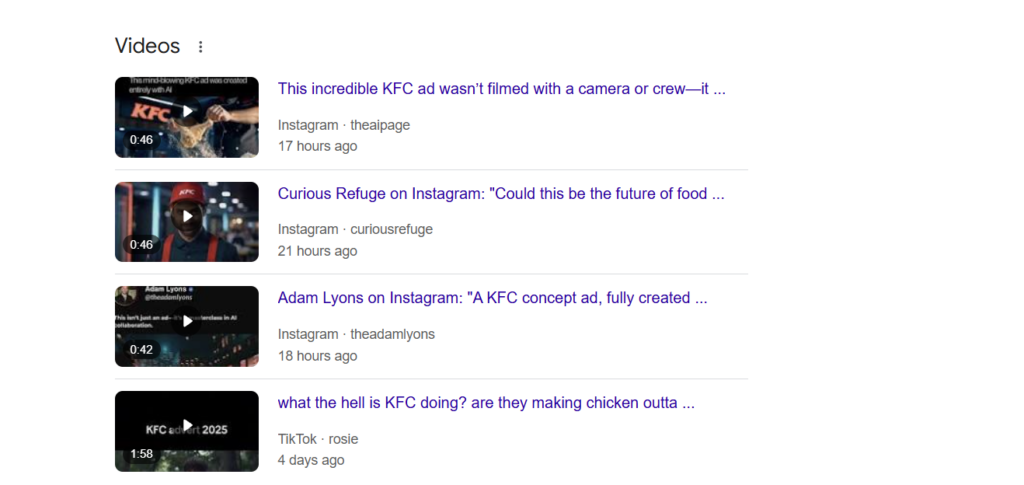
AI is a tool, and it’s here to stay. No one’s debating that. What is up for debate is how it’s used in the creative industries, how it’s used ethically, and how it can be harnessed to enhance human storytelling—not pilfer it, as we’ve so blatantly seen in this situation.
This KFC ad is not to be praised. Instead, it should be held up as a clear example of everything wrong with AI’s unethical use in creative video production.

